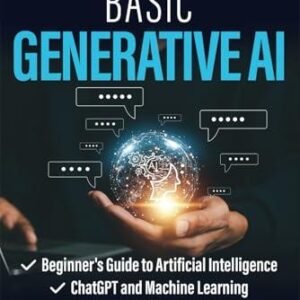In an increasingly dynamic and competitive marketplace, the ability to anticipate future trends and adapt to changing consumer demands is crucial for sustained business success. Traditional forecasting methods, often reliant on historical data and manual analysis, are becoming insufficient in the face of expanding data sets and evolving market conditions. Enter Artificial Intelligence (AI)—a transformative force that is reshaping the landscape of business forecasting. By leveraging advanced algorithms and machine learning models, AI enables organizations to derive actionable insights from vast amounts of data, facilitating more accurate predictions and informed decision-making. This article will explore how AI insights are revolutionizing the forecasting process, empowering businesses to not only react to market shifts but proactively shape their strategies for growth and innovation. As we delve into the methodologies and real-world applications, we will uncover the profound impact of AI on the future of business forecasting and its implications for industry leaders seeking to stay ahead of the curve.
Table of Contents
- Harnessing the Power of Predictive Analytics for Enhanced Accuracy
- Integrating Artificial Intelligence into Traditional Forecasting Models
- Driving Strategic Decision-Making through Real-Time Data Insights
- Best Practices for Implementing AI-Driven Forecasting Solutions
- The Conclusion
Harnessing the Power of Predictive Analytics for Enhanced Accuracy
In today’s dynamic business landscape, leveraging predictive analytics has become a cornerstone for organizations aiming to achieve greater accuracy in their forecasting. By analyzing historical data, identifying trends, and utilizing machine learning algorithms, businesses can forecast future outcomes with remarkable precision. The benefits of embracing this technology extend beyond mere predictions:
- Improved Decision-Making: Data-driven insights guide leaders in making informed choices that align with market demands.
- Risk Mitigation: Anticipating potential challenges allows companies to develop strategies that minimize risk and ensure stability.
- Optimized Resources: Understanding future needs helps in efficient allocation of resources, reducing waste and enhancing productivity.
Implementing a robust predictive analytics framework involves integrating advanced tools and technologies that can process vast amounts of data seamlessly. With platforms powered by artificial intelligence, businesses can automate their forecasting processes, enabling them to harness real-time insights efficiently. A simplified comparison of manual versus AI-powered forecasting illustrates the transformative effect of technology:
| Aspect | Manual Forecasting | AI-Powered Forecasting |
|---|---|---|
| Speed | Time-consuming | Real-time analysis |
| Accuracy | Prone to human error | High precision |
| Scalability | Limited | Highly scalable |
Integrating Artificial Intelligence into Traditional Forecasting Models
heralds a new era of predictive accuracy and operational efficiency. By leveraging vast amounts of data, AI technologies can uncover complex patterns and provide actionable insights that were previously obscured. This integration not only enhances the quality of forecasts but also streamlines the decision-making processes. Businesses can benefit from:
- Predictive Analytics: Harnessing algorithms that learn from historical data to predict future outcomes with remarkable accuracy.
- Real-Time Data Processing: Utilizing AI’s ability to analyze live data feeds, allowing for timely adjustments to forecasts.
- Enhanced Scenario Analysis: Running simulations with AI to assess potential outcomes under various conditions.
The synergy between AI and traditional forecasting techniques allows organizations to maintain a competitive edge. By combining qualitative insights with quantitative models, leaders can gain a holistic view of market dynamics. A practical table illustrating the advantages of this synergy might look like:
| Traditional Methods | AI-Enhanced Methods |
|---|---|
| Static Historical Models | Dynamic, Adaptable Models |
| Limited Data Sources | Multi-Source Data Integration |
| Basic Trend Analysis | Comprehensive Predictive Analytics |
Driving Strategic Decision-Making through Real-Time Data Insights
In today’s fast-paced business environment, leveraging real-time data insights has become a cornerstone for effective strategic decision-making. Organizations that harness the potential of AI-driven analytics can access a wealth of information instantaneously, allowing them to identify trends, assess risks, and seize opportunities with unprecedented speed. The integration of technology in data processing not only promotes agility but also fosters a culture of informed decision-making, where leaders can rely on accurate, up-to-the-minute insights to guide their strategies. Businesses can capitalize on this ability by focusing on the following key areas:
- Enhanced Predictive Analysis: Utilizing machine learning algorithms to forecast market trends.
- Risk Management: Identifying potential issues before they escalate through real-time monitoring.
- Customer Behavior Insights: Gaining deeper understanding of consumer patterns and preferences.
Moreover, the synergy of AI insights with traditional business intelligence tools can lead to transformative shifts in forecasting accuracy. Companies can utilize real-time dashboards that compile data from various sources, providing a comprehensive view of their operational landscape. By establishing a culture of data-influenced strategy, organizations can experience:
| Benefit | Description |
|---|---|
| Improved Collaboration | Facilitating cross-departmental communication through shared insights. |
| Resource Optimization | Streamlining operations based on real-time performance metrics. |
| Increased Revenue | Driving sales through targeted marketing campaigns based on predictive data. |
Best Practices for Implementing AI-Driven Forecasting Solutions
Integrating AI-driven forecasting solutions into your business requires a strategic approach to maximize efficiency and effectiveness. Start by ensuring that you have a robust data foundation, as the accuracy of AI models heavily relies on high-quality data. Focus on the following elements:
- Data Cleaning: Remove inconsistencies and ensure completeness.
- Data Integration: Combine data from various sources for a holistic view.
- Feature Selection: Identify and extract relevant variables that influence forecasting accuracy.
Establishing a continuous data pipeline for real-time insights and ensuring data governance policies are in place will further enhance the performance of AI models.
Once the data structure is solidified, it’s crucial to foster a culture of collaboration between data scientists and business stakeholders. Implement the following strategies:
- Cross-Functional Teams: Encourage collaboration between IT, operations, and analytical teams.
- Iterative Processes: Utilize Agile methodologies for continual model refinement based on feedback.
- Training and Education: Provide training for staff on interpreting AI outputs and how they apply to decision-making.
Regularly monitor model performance and make adjustments based on real-world outcomes to ensure that AI-driven solutions evolve with business needs.
The Conclusion
the integration of AI into business forecasting represents a pivotal shift in how organizations interpret data and predict future trends. By harnessing the power of advanced algorithms and machine learning techniques, businesses can transform raw data into actionable insights, leading to improved decision-making and strategic agility. As the landscape of economic uncertainty continues to evolve, the ability to accurately forecast demand, optimize inventory, and identify emerging market opportunities becomes essential.
Embracing AI-driven insights not only enhances operational efficiency but also fosters a culture of innovation and adaptability that is crucial for thriving in today’s competitive environment. Companies that invest in these advanced tools will not only stay ahead of the curve but also position themselves as leaders in their respective industries. As we advance, it is imperative for organizations to leverage these technologies thoughtfully and strategically, ensuring a sustainable and prosperous future driven by informed forecasting and data-driven decision-making.





